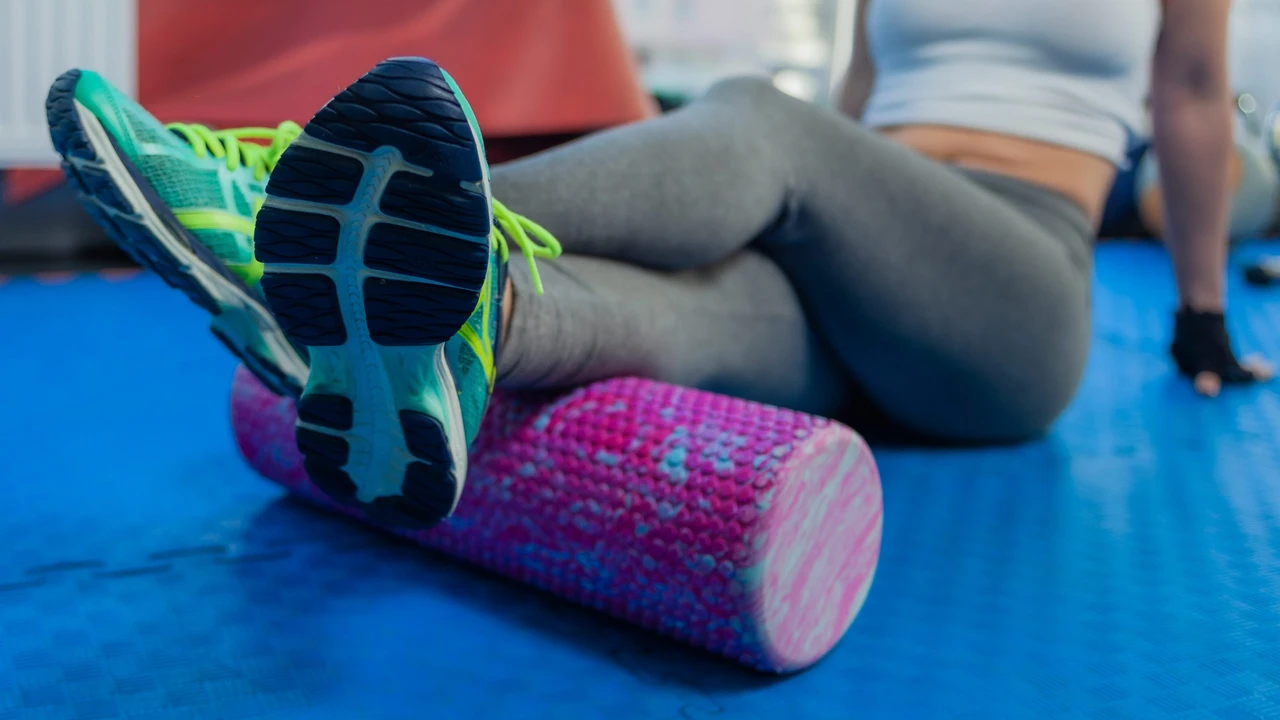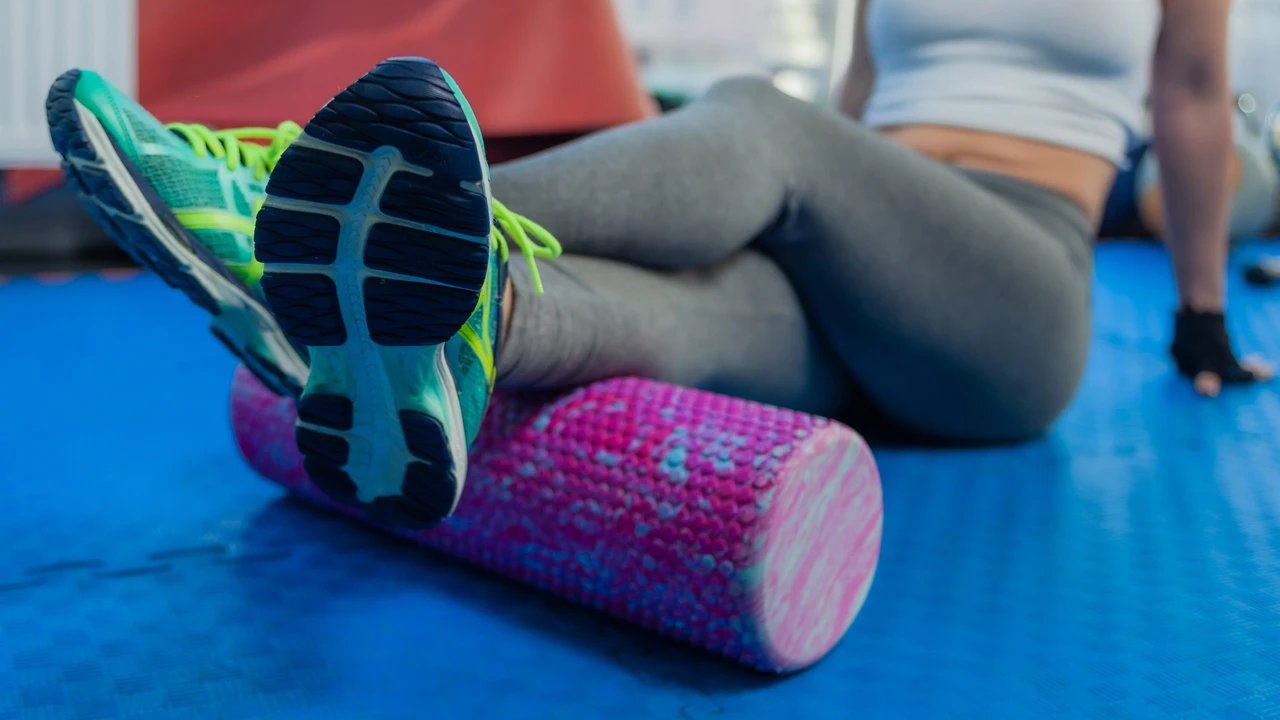Is Jogging Safe? Important Safety Tips for Beginners

Understanding The Fundamentals Of Jogging For Beginners
So, you're thinking about lacing up your shoes and hitting the pavement for a jog? That's fantastic! Jogging is a wonderful way to improve your physical and mental well-being. But before you start pounding the streets, let's cover some essential fundamentals to ensure you have a safe and enjoyable experience. We'll explore what jogging actually is, differentiate it from running, and discuss the numerous benefits it offers.
What Exactly Is Jogging Defining The Activity
Jogging is essentially a form of running, but at a slower, more sustainable pace. Think of it as a comfortable, conversational speed. It's all about covering distance without pushing yourself to your absolute limit. This makes it an excellent entry point for beginners and a valuable option for experienced runners on recovery days.
Jogging Versus Running Understanding The Key Differences
The primary difference between jogging and running lies in the intensity and speed. Running involves a higher level of exertion and a faster pace. Jogging, on the other hand, is a more relaxed and less demanding activity. You should be able to hold a conversation while jogging comfortably. If you find yourself gasping for air, you're probably running.
Unveiling The Health Benefits Of Regular Jogging
The benefits of jogging are numerous and well-documented. Regular jogging can significantly improve your cardiovascular health, strengthening your heart and lowering your blood pressure. It also helps to burn calories, leading to weight management and a reduced risk of obesity-related diseases. Furthermore, jogging can boost your mood, reduce stress, and improve your sleep quality. It's a fantastic way to clear your head and connect with nature (or your local park).
Essential Gear For A Comfortable Jogging Experience
Having the right gear can make a world of difference in your jogging experience. Comfortable shoes, appropriate clothing, and a few optional accessories can enhance your performance and prevent injuries. Let's dive into the essentials.
Choosing The Right Jogging Shoes For Optimal Performance
Your shoes are arguably the most important piece of equipment. A good pair of jogging shoes will provide cushioning, support, and stability, protecting your feet and joints from impact. Look for shoes that are specifically designed for running or jogging, and consider your foot type (e.g., neutral, pronated, or supinated) when making your selection. Visiting a specialty running store is highly recommended, as they can analyze your gait and recommend the best shoes for your individual needs.
Product Recommendation: Brooks Ghost 14
The Brooks Ghost 14 is a popular choice for joggers due to its excellent cushioning, smooth ride, and durable construction. It's a neutral shoe that works well for a wide range of foot types and running styles. The Ghost 14 features Brooks' DNA LOFT cushioning, which provides a soft and responsive feel underfoot. It also has a Segmented Crash Pad that adapts to your foot strike for a smoother transition from heel to toe. You can find the Brooks Ghost 14 for around $130.
Product Recommendation: Saucony Kinvara 13
If you're looking for a lightweight and responsive option, the Saucony Kinvara 13 is an excellent choice. It's a minimalist shoe that provides a natural feel, allowing you to connect with the ground. The Kinvara 13 features Saucony's PWRRUN cushioning, which offers a good balance of cushioning and responsiveness. It's a great option for faster-paced jogs or for those who prefer a more minimalist feel. The Saucony Kinvara 13 typically retails for around $120.
Shoe Comparison: Brooks Ghost 14 vs Saucony Kinvara 13
The Brooks Ghost 14 is a more cushioned and supportive shoe, making it a better choice for longer distances or for those who need extra cushioning. The Saucony Kinvara 13 is lighter and more responsive, making it a better choice for faster-paced jogs or for those who prefer a more natural feel. Ultimately, the best shoe for you will depend on your individual preferences and needs.
Clothing Considerations For Different Weather Conditions
Your clothing should be comfortable, breathable, and appropriate for the weather conditions. In warm weather, opt for lightweight, moisture-wicking fabrics that will help keep you cool and dry. In cold weather, dress in layers to trap heat and protect yourself from the elements. Avoid cotton, as it absorbs moisture and can make you feel cold and clammy.
Optional Accessories Enhancing Your Jogging Experience
While not essential, a few accessories can enhance your jogging experience. A fitness tracker can help you monitor your progress and track your distance, pace, and heart rate. A water bottle or hydration pack is essential for staying hydrated, especially on longer jogs. And sunscreen and sunglasses are important for protecting yourself from the sun's harmful rays.
Mastering Proper Jogging Form And Technique
Proper form and technique are crucial for preventing injuries and maximizing your efficiency. Paying attention to your posture, stride, and arm movements can significantly improve your jogging experience. Let's break down the key elements of proper jogging form.
Maintaining Good Posture While Jogging
Good posture is essential for preventing back pain and other injuries. Stand tall with your head up, shoulders relaxed, and core engaged. Avoid slouching or hunching forward. Imagine a string pulling you up from the crown of your head.
Optimizing Your Stride Length And Cadence
Your stride length and cadence (steps per minute) are important factors in your efficiency. Avoid overstriding, which can put excessive stress on your joints. A shorter, quicker stride is generally more efficient and less likely to cause injury. Aim for a cadence of around 170-180 steps per minute.
Effective Arm Movements For Balance And Propulsion
Your arm movements should be natural and relaxed. Bend your elbows at a 90-degree angle and swing your arms forward and back, keeping them close to your body. Avoid crossing your arms across your chest, as this can waste energy and throw you off balance.
Creating A Safe And Effective Jogging Plan
A well-structured jogging plan is essential for achieving your goals and preventing injuries. Start slowly, gradually increase your mileage, and incorporate rest days into your schedule. Let's explore the key components of a safe and effective jogging plan.
Starting Slowly Gradual Progression Is Key
Don't try to do too much too soon. Start with short, easy jogs and gradually increase your distance and intensity over time. Listen to your body and take rest days when you need them. A good rule of thumb is to increase your mileage by no more than 10% per week.
Incorporating Rest Days For Muscle Recovery
Rest days are just as important as workout days. They allow your muscles to recover and rebuild, preventing overtraining and injuries. Schedule at least one rest day per week, and consider taking more if you're feeling particularly sore or fatigued.
Warm Up And Cool Down Routines For Injury Prevention
Always warm up before each jog and cool down afterward. A warm-up should consist of light cardio and dynamic stretching, such as arm circles, leg swings, and torso twists. A cool-down should consist of light cardio and static stretching, such as hamstring stretches, calf stretches, and quad stretches. Warming up prepares your body for exercise, while cooling down helps your muscles recover.
Fueling Your Body For Optimal Jogging Performance
Proper nutrition and hydration are crucial for fueling your body and maximizing your performance. Eat a balanced diet, drink plenty of water, and consider using sports drinks or gels for longer jogs. Let's discuss the key aspects of fueling your body for optimal jogging performance.
Pre Jogging Nutrition For Sustained Energy
Before a jog, focus on consuming easily digestible carbohydrates that will provide you with sustained energy. Good options include a banana, a piece of toast with peanut butter, or a small bowl of oatmeal. Avoid eating large meals or foods high in fat or fiber, as these can cause stomach upset.
Hydration Strategies Before During And After Jogging
Hydration is essential for preventing dehydration and maintaining optimal performance. Drink plenty of water throughout the day, especially before, during, and after your jogs. For longer jogs (over an hour), consider using a sports drink to replenish electrolytes.
Post Jogging Recovery Nutrition For Muscle Repair
After a jog, focus on consuming protein and carbohydrates to help your muscles recover and rebuild. Good options include a protein shake, a Greek yogurt with fruit, or a chicken breast with brown rice. Replenishing your glycogen stores (stored carbohydrates) is important for preventing fatigue and promoting recovery.
Staying Motivated And Consistent With Your Jogging Routine
Staying motivated and consistent can be challenging, but it's essential for achieving your goals. Set realistic goals, find a jogging buddy, and track your progress to stay on track. Let's explore some strategies for staying motivated and consistent with your jogging routine.
Setting Realistic Goals For Long Term Success
Set goals that are challenging but achievable. Start with small, manageable goals and gradually increase the difficulty as you progress. Avoid setting unrealistic expectations, as this can lead to disappointment and discouragement.
Finding A Jogging Buddy For Accountability And Support
Jogging with a friend or family member can provide accountability and support. Having someone to share your workouts with can make the experience more enjoyable and help you stay motivated. You can also join a local running club to meet new people and find training partners.
Tracking Your Progress And Celebrating Milestones
Tracking your progress can help you stay motivated and see how far you've come. Use a fitness tracker or a running app to track your distance, pace, and heart rate. Celebrate your milestones along the way to reward yourself for your hard work.
Addressing Common Jogging Challenges And Solutions
Every jogger faces challenges at some point. Dealing with injuries, boredom, and weather conditions can be frustrating. Let's discuss some common jogging challenges and offer solutions for overcoming them.
Preventing And Managing Common Jogging Injuries
Injuries are a common concern for joggers. Preventing injuries involves proper form, gradual progression, and adequate rest. If you experience pain, stop jogging and consult with a doctor or physical therapist. Common jogging injuries include shin splints, runner's knee, and plantar fasciitis.
Combating Boredom And Keeping Your Jogs Interesting
Boredom can be a major obstacle to consistency. To combat boredom, try varying your routes, listening to music or podcasts, or jogging with a friend. You can also set new challenges for yourself, such as trying a new distance or pace.
Adapting Your Jogging Routine To Different Weather Conditions
Weather conditions can significantly impact your jogging routine. In hot weather, jog early in the morning or late in the evening to avoid the heat. In cold weather, dress in layers and protect yourself from the wind. In rainy weather, wear waterproof clothing and be careful of slippery surfaces.
Advanced Jogging Techniques For Experienced Joggers
Once you've mastered the basics of jogging, you can explore more advanced techniques to improve your performance. Interval training, hill workouts, and tempo runs can help you increase your speed, endurance, and overall fitness. Let's delve into some advanced jogging techniques for experienced joggers.
Incorporating Interval Training For Speed And Endurance
Interval training involves alternating between high-intensity bursts of running and periods of rest or low-intensity jogging. This type of training can significantly improve your speed and endurance. A sample interval workout might involve running at a fast pace for 1 minute, followed by 2 minutes of jogging, repeated several times.
Adding Hill Workouts For Strength And Power
Hill workouts are a great way to build strength and power in your legs. Find a hill and run up it at a moderate pace, then jog down. Repeat this several times, gradually increasing the length and steepness of the hill. Hill workouts can also improve your cardiovascular fitness.
Tempo Runs For Improving Your Lactate Threshold
A tempo run is a sustained effort run at a comfortably hard pace. This type of run helps to improve your lactate threshold, which is the point at which your body starts to accumulate lactic acid. A tempo run typically lasts for 20-40 minutes and should be run at a pace that is slightly faster than your normal jogging pace.
Jogging Apps And Technology To Enhance Your Training
Technology can be a valuable tool for enhancing your jogging training. Numerous apps and devices can track your progress, provide personalized training plans, and offer motivation and support. Let's explore some popular jogging apps and technologies.
Strava A Popular App For Tracking And Sharing Your Runs
Strava is a popular app that allows you to track your runs, share them with friends, and compete on virtual segments. It also provides detailed data about your pace, distance, and elevation gain. Strava is a great way to stay motivated and connect with other runners.
Garmin Smartwatches For Comprehensive Performance Data
Garmin smartwatches offer a wide range of features for tracking your jogging performance. They can track your pace, distance, heart rate, and even your stride length and cadence. Garmin smartwatches also provide personalized training plans and can sync with other apps like Strava.
Product Recommendation: Garmin Forerunner 245
The Garmin Forerunner 245 is a popular choice for runners and joggers due to its comprehensive features and accurate data. It tracks pace, distance, heart rate, cadence, and more. It also offers personalized training plans and can sync with Strava. The Forerunner 245 typically retails for around $350.
Product Recommendation: Apple Watch Series 7
The Apple Watch Series 7 is another excellent option for tracking your jogging performance. It offers a wide range of features, including GPS tracking, heart rate monitoring, and fall detection. It also integrates seamlessly with the Apple ecosystem and provides access to a wide range of fitness apps. The Apple Watch Series 7 starts at around $400.
Smartwatch Comparison: Garmin Forerunner 245 vs Apple Watch Series 7
The Garmin Forerunner 245 is more focused on running and provides more detailed performance data. The Apple Watch Series 7 offers a wider range of features, including smartwatch capabilities and integration with the Apple ecosystem. The best choice for you will depend on your individual needs and preferences.
Nike Run Club A Free App With Guided Runs And Training Plans
Nike Run Club is a free app that offers guided runs and personalized training plans. It also allows you to track your progress and connect with other runners. Nike Run Club is a great option for beginners and experienced runners alike.
:max_bytes(150000):strip_icc()/277019-baked-pork-chops-with-cream-of-mushroom-soup-DDMFS-beauty-4x3-BG-7505-5762b731cf30447d9cbbbbbf387beafa.jpg)






